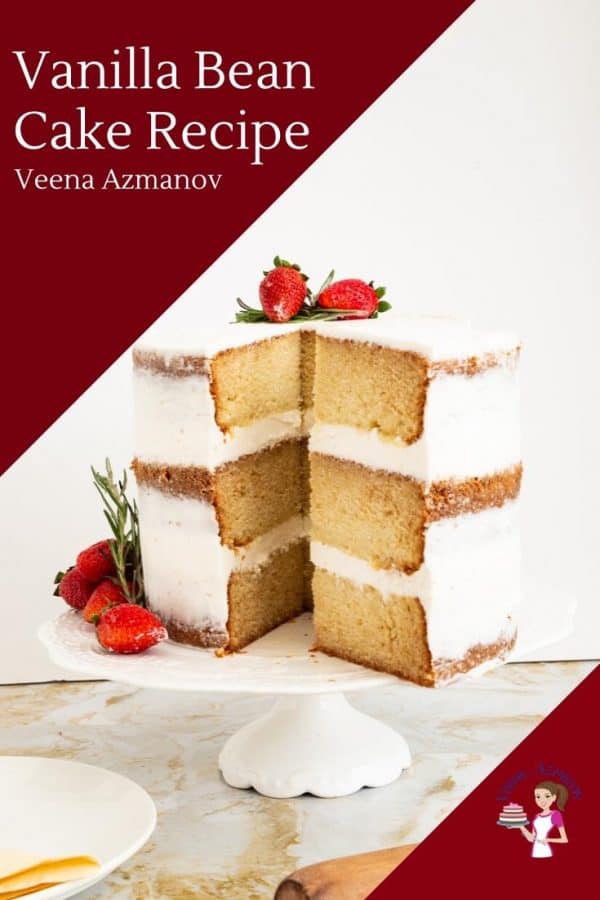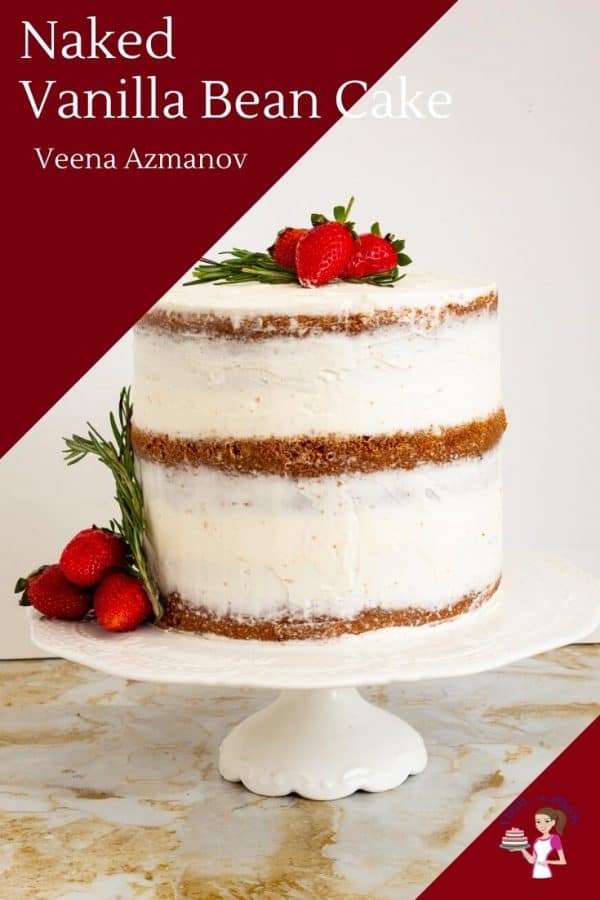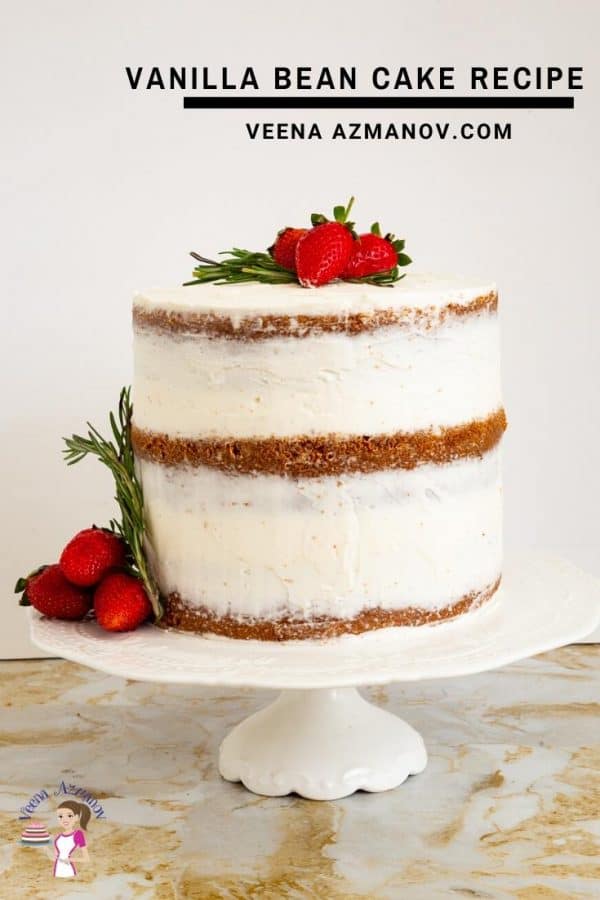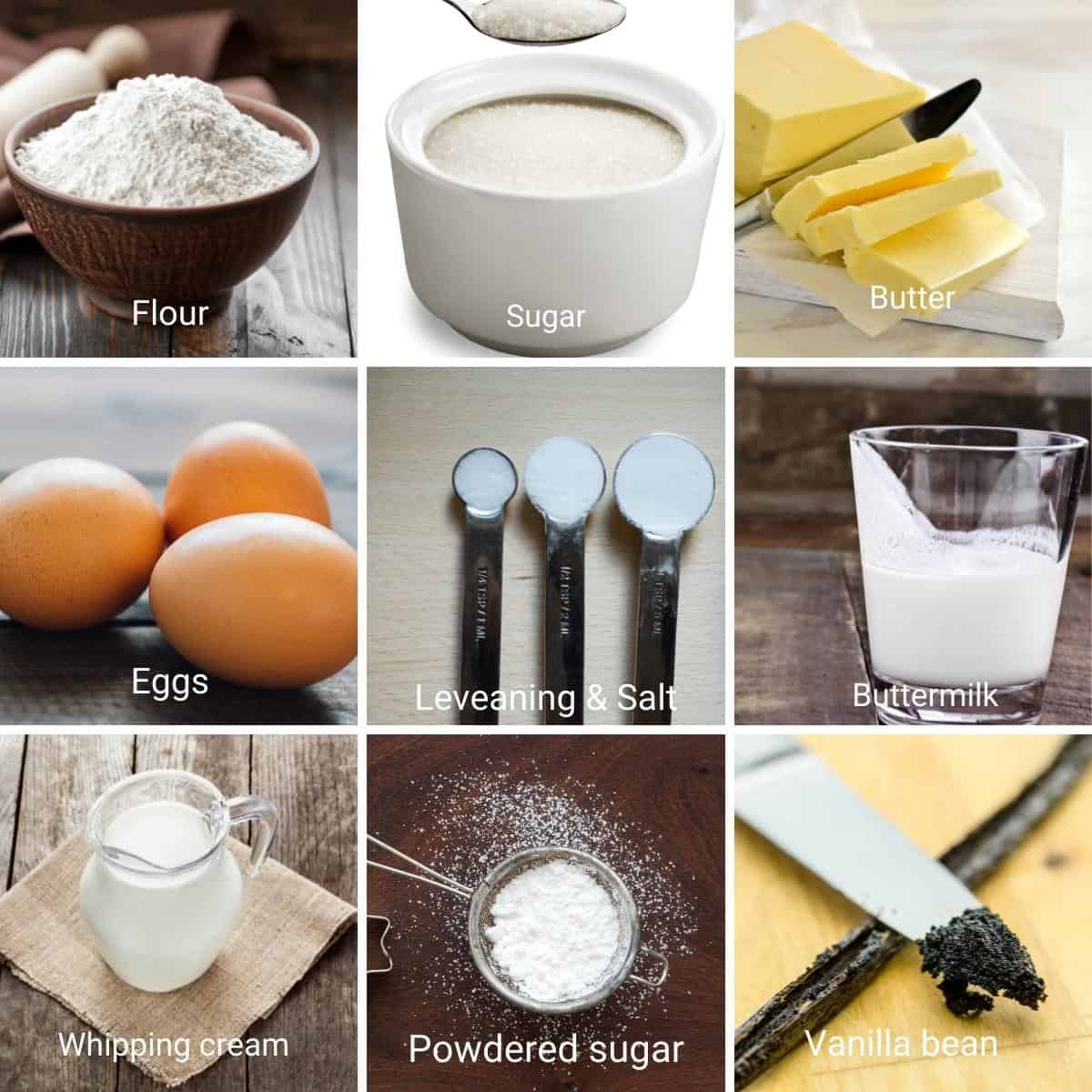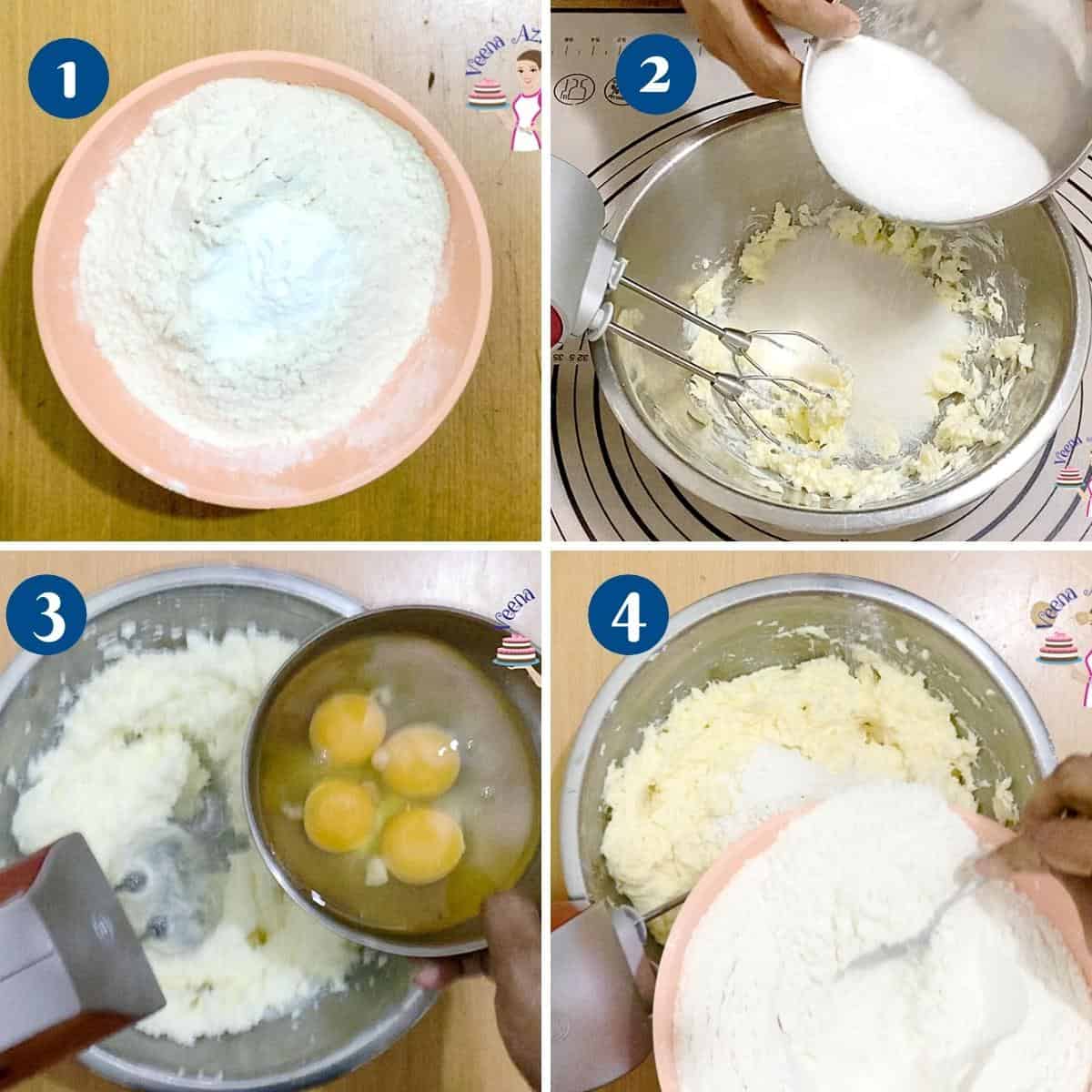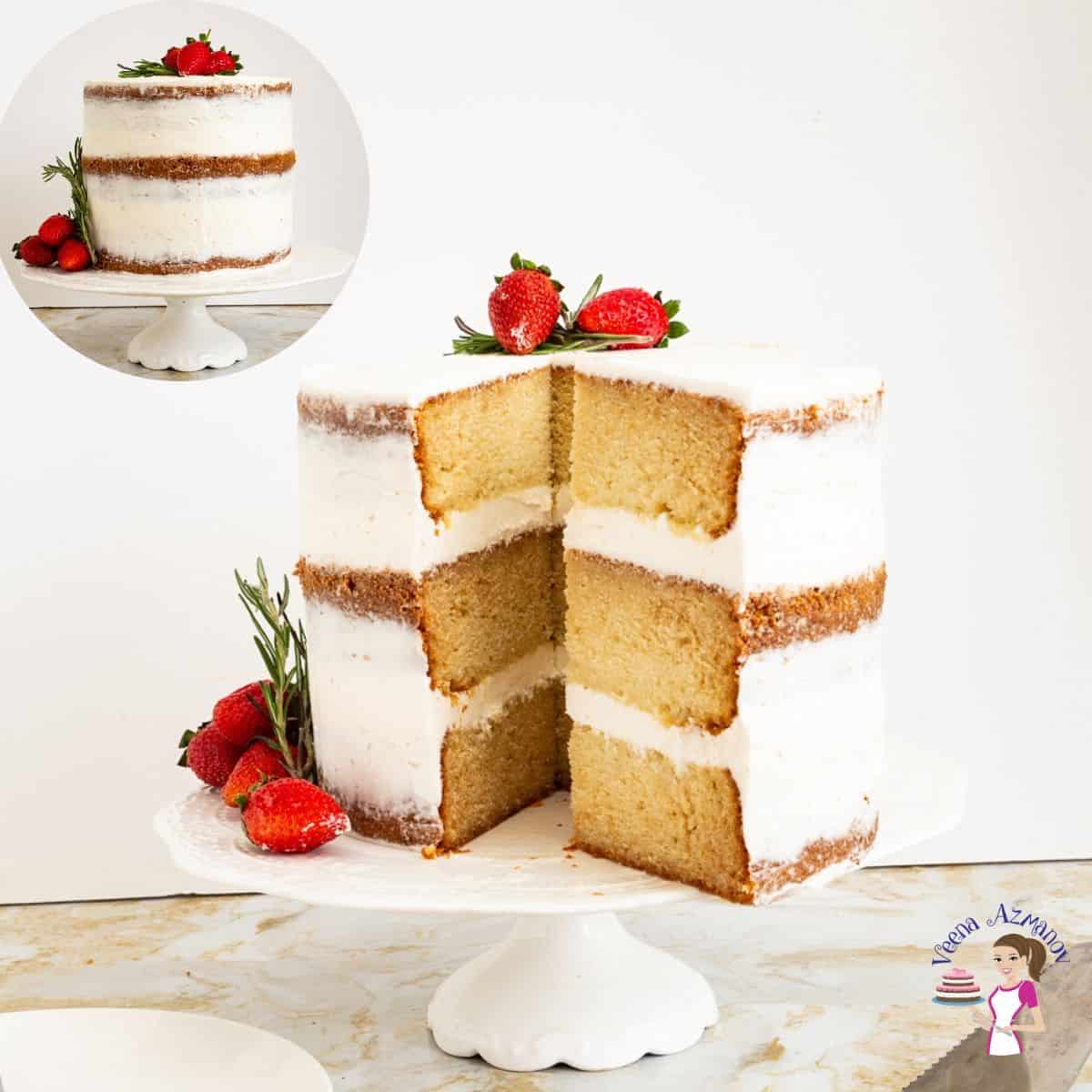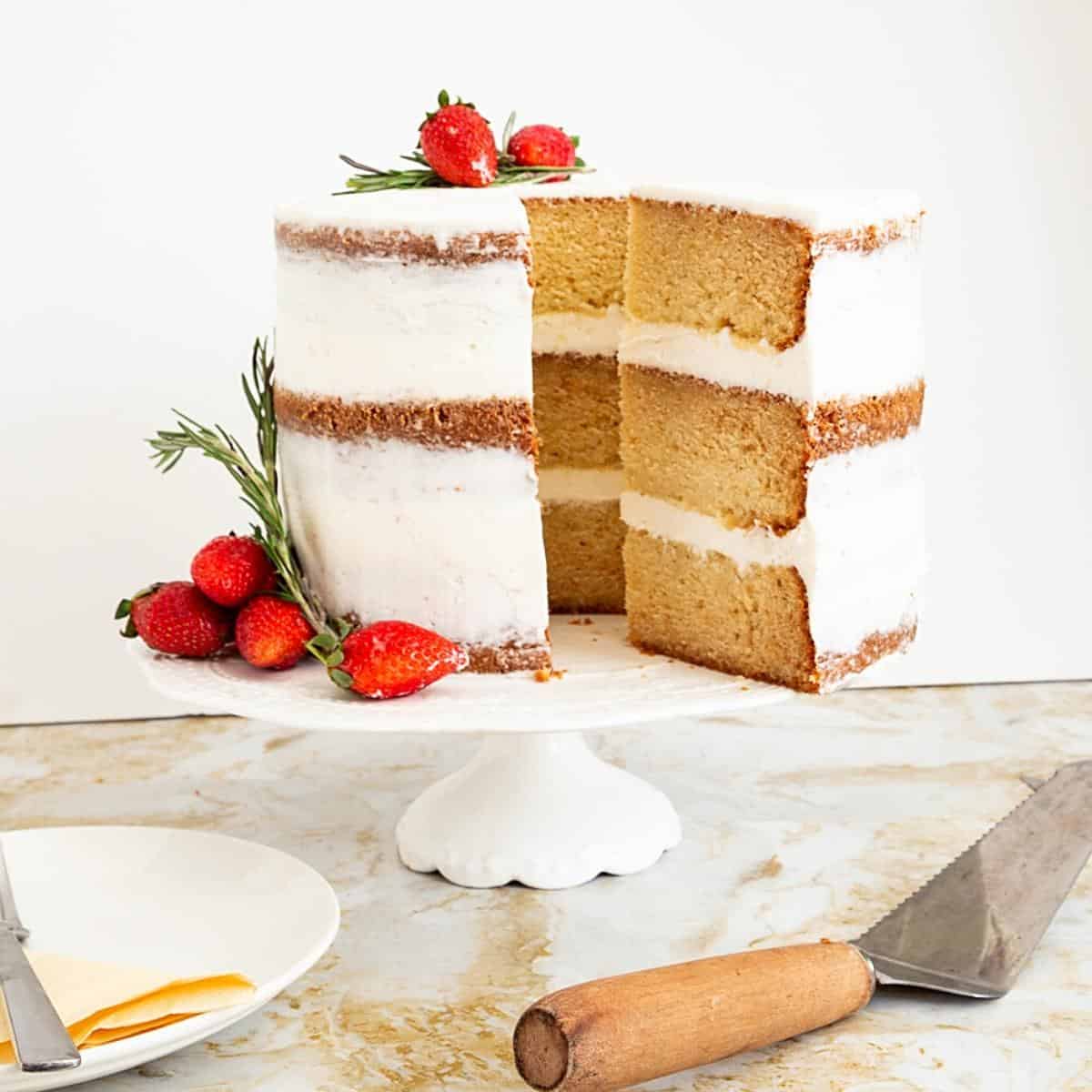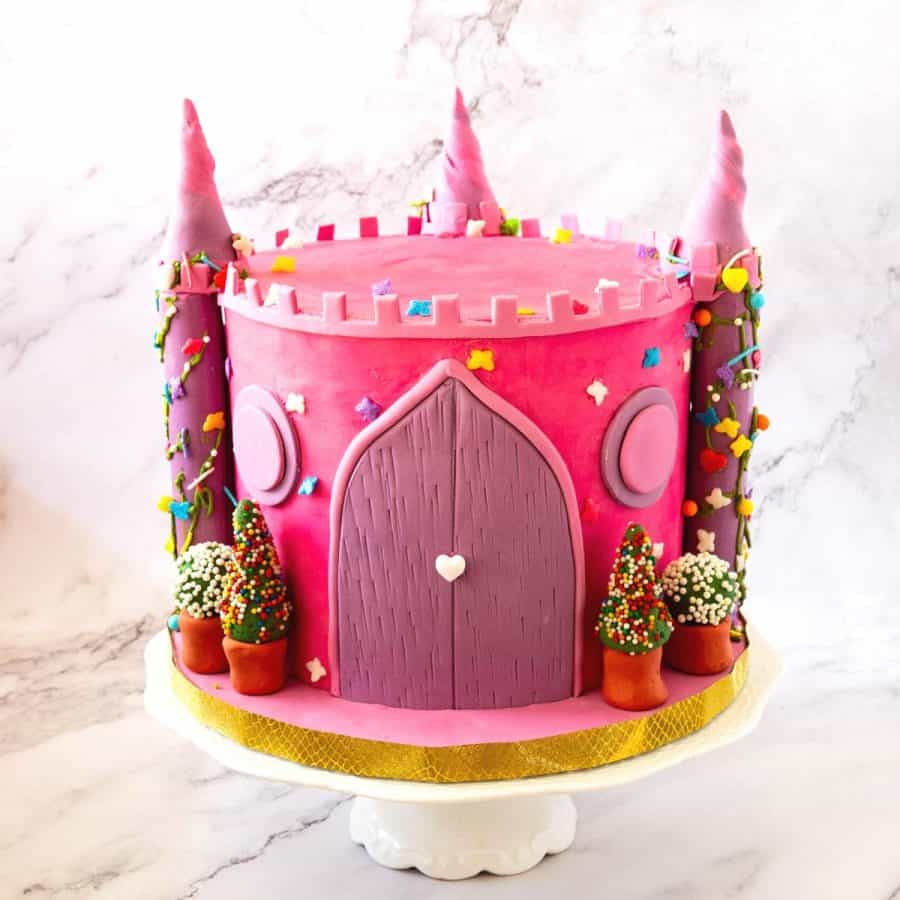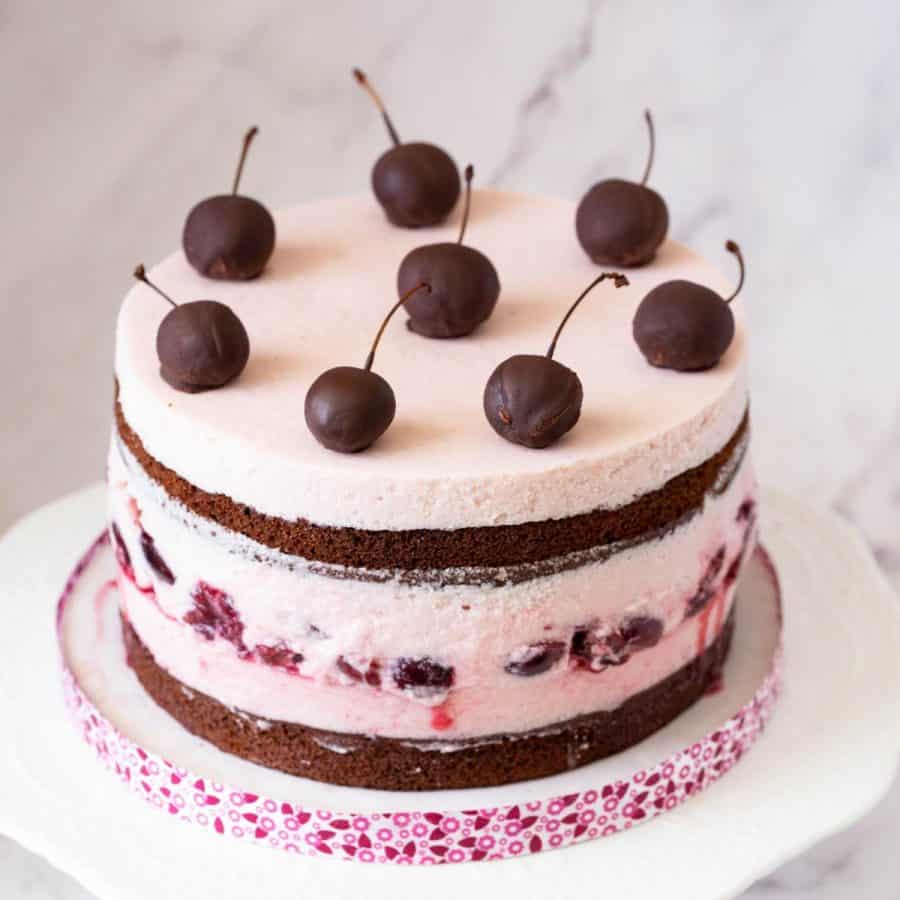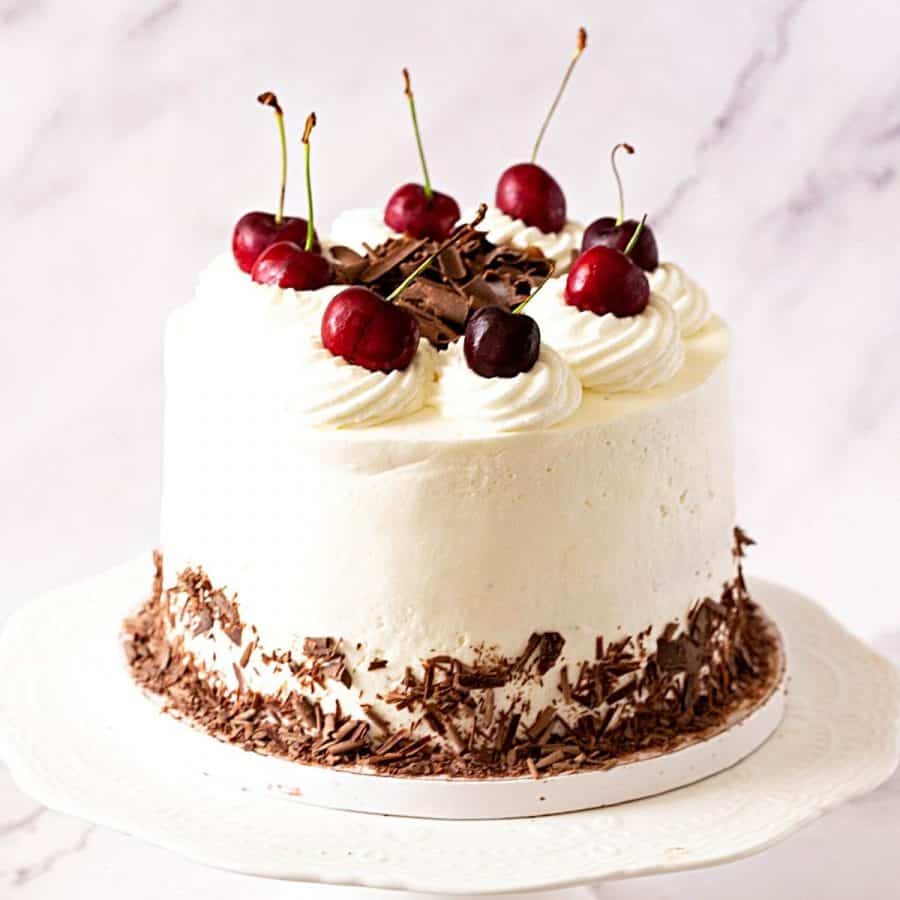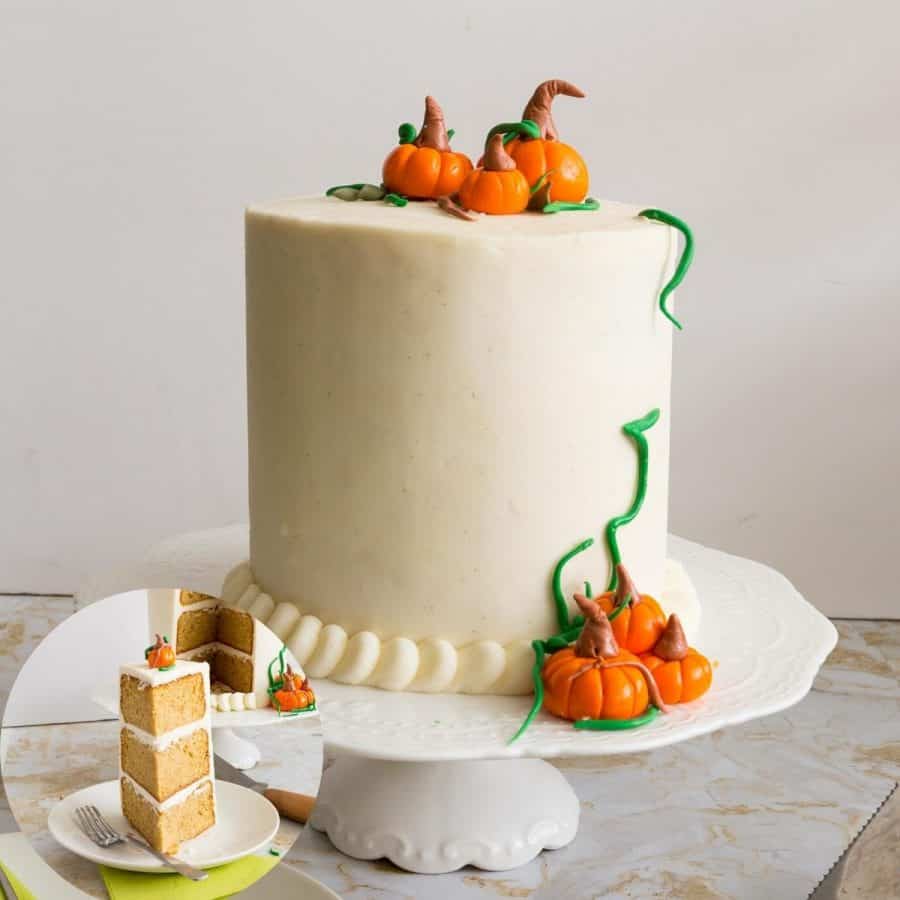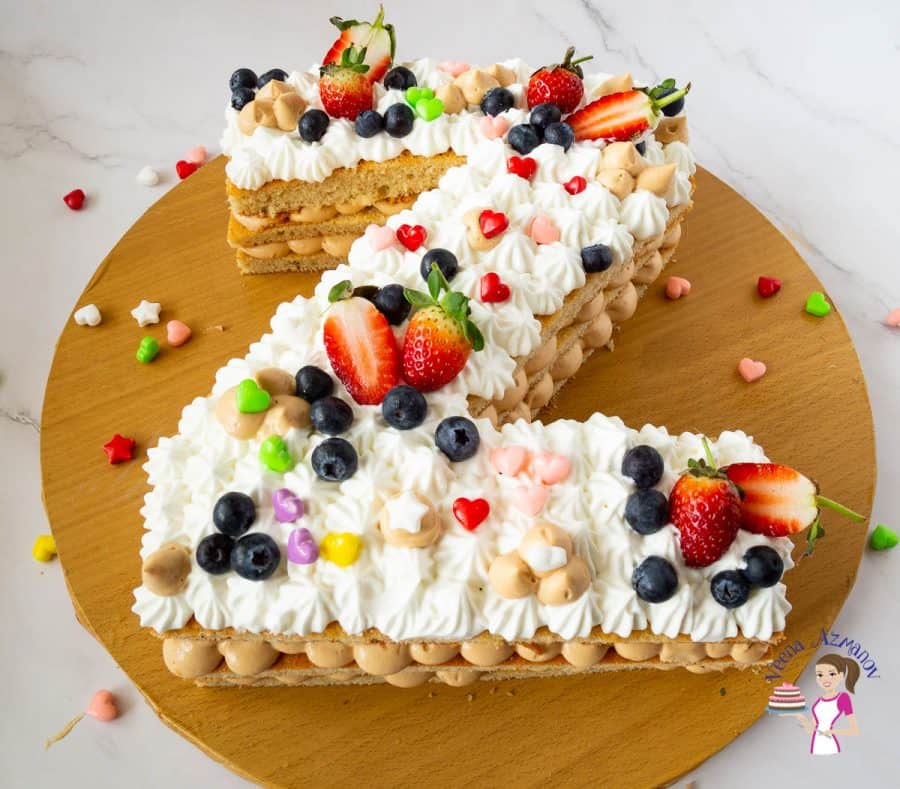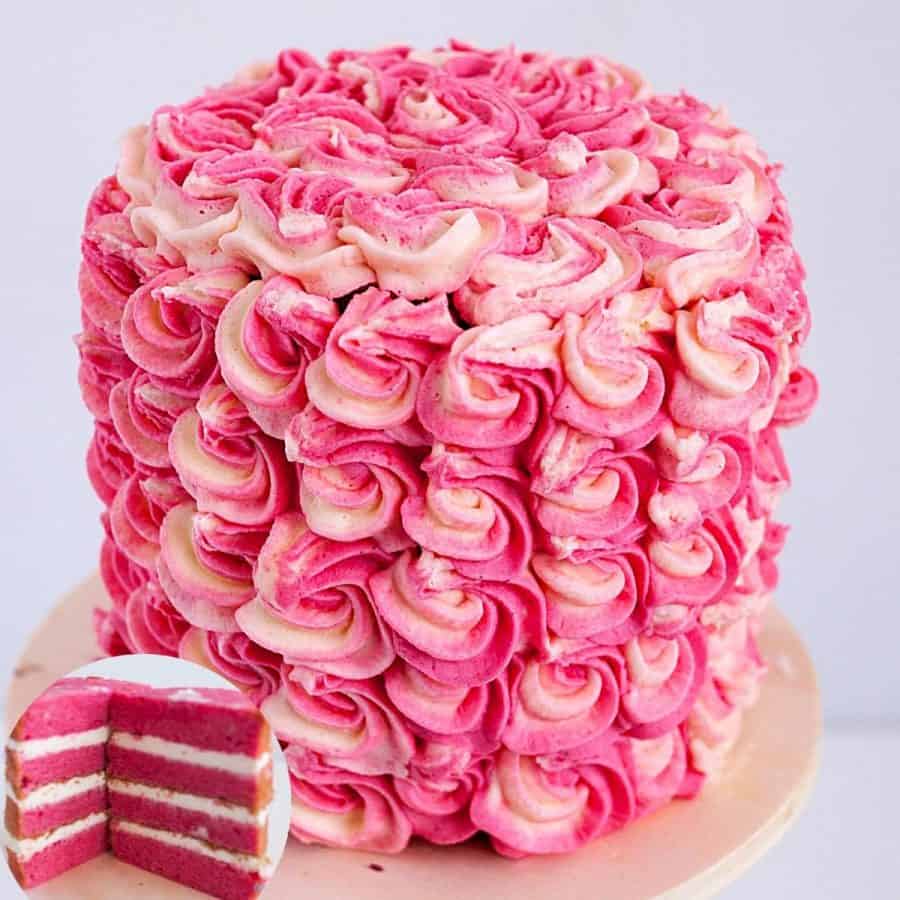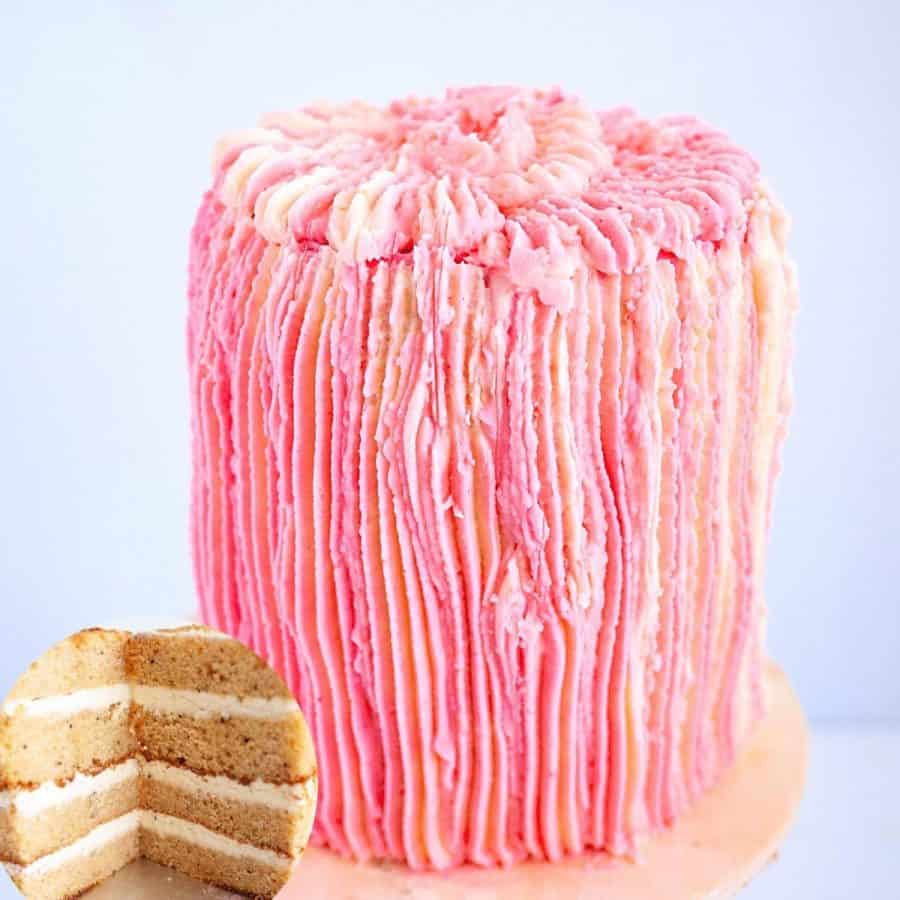I have a soft spot for naked cakes. In fact, I love to leave the caramelization on my naked cakes. I often make my one-bowl vanilla or one-bowl chocolate and almost never frost it. Or, I use barely any frosting. When you have a good cake recipe that is wonderfully light, airy, and moist you really do not need anything more. Do you?
Moist vanilla bean cake
Cake
Oven and Pans – Preheat the oven to 325 °F/ 165 °C/ Gas Mark 3. Grease and line 3 x 8-inch round baking pans with parchment paper.Pro tip – You can make 2 x 8-inch round cakes and divide them into 4 layers.
Dry ingredients – In a medium bowl, combine the flour, baking powder, baking soda, and salt. Wet ingredients – In the bowl of a stand mixer, with the paddle attachment on medium speed, cream the butter and sugar until light and fluffy. Next, add the eggs, one at a time, followed by the vanilla bean paste. Combine – add the flour mixture and buttermilk in three batches. Scrape the sides and bottom of the bowl with a rubber spatula to ensure you have a smooth batter.
Bake – Divide the batter equally between the prepared baking pans. Place the pan on the middle rack in the oven and bake for 30 to 35 minutes or until a skewer inserted in the center of the cake comes out clean.Pro tip – I like to use cake strips to ensure my layer cakes bake flat. Cool in the baking pan for 5 minutes. Invert and cool on a cooling rack completely before you decorate.
Frosting
Buttercream – In the bowl of a stand mixer, with the paddle attachment, cream the butter and powdered sugar until well combined. Then, add the cream and vanilla extract. Continue to whip until light and airy – at least 2 to 3 minutes.Pro tip – It is important to whip so you have a whipped cream-like consistency. Otherwise, the buttercream will be too soft to spread.
Assemble
Level – Using a bread knife or cake leveler cut the domes off the cake layers. Brush each layer with the cooled simple syrup.Pro tip – if you baked two layers, you can split each layer horizontally to make four layers. Stack – Place a cake layer on the cake board or cake stand. Top with a big dollop of buttercream – spread evenly using a straight-edge spatula. Then, top the next cake layer on top followed by more buttercream and more layers. Chill for 15 minutes.Pro tip – Chilling the cake at this point will ensure the layers don’t move when you frost the outside.
Frost – Next, spread the ganache around and on top of the cake. Using a paddle motion when spreading will help smooth the ganache better. Remove as much of the frosting, so the cake is barely coated but the naked cake can still be seen through.Pro tip – frosting the outside will help seal the cake and lock in all the moisture preventing it from getting dry. Then remove as much as you can to show the naked cake below. Decorate with strawberries or similar garnish.
Frequently asked questions
Thank you for sharing - Save for later
Well, for one, a slice of vanilla cake has the power to brighten up any day. It’s a classic dessert that’s perfect for any occasion, from birthdays to weddings to simply treating yourself after a long week. Plus, baking a cake from scratch is a satisfying and rewarding experience. And let’s not forget the delicious aroma that fills your home as the cake bakes in the oven. Trust me, it’s worth it. The batter is a classic vanilla cake batter made with butter, white sugar, and cake flour using the creaming method. A surprisingly simple and easy recipe to make from scratch from start to finish. No surprises! To keep it simple, I’ve paired this is my bakery style buttercream frosting which is very popular because it’s easy and simple to make. Having said that, there are so many other choices for the frosting you can use for this cake, such as: Swiss or Italian Meringue Buttercream French or German Buttercream Frosting Chocolate Buttercream Frosting, Vanilla Buttercream Frosting. See all over 30 plus frosting recipes
Cake flour – Cake flour will give the cake a wonderful soft crumb. But, you can certainly use all-purpose flour. And if you have only self-raising flour on hand use it but reduce the baking powder by half. Unsalted butter – I always use unsalted so I can control the amount of salt. And yet, if salted butter is all you have, use it and omit salt in the recipe. Sugar – I’m using white sugar so I can have a white cake. It’s always best to use fine-grain white sugar, so it dissolves easily in the butter. Buttermilk – If you don’t buttermilk on hand, don’t worry. It takes just 5 minutes to make homemade buttermilk for baking. Vanilla bean paste – A good quality vanilla is very important especially in a vanilla cake. I’m using vanilla bean paste, but you can use vanilla bean scrapings as well as a good quality vanilla extract. Substitutions – If you’re missing any of these ingredients, don’t worry – there are substitutes you can use. For example, you can use vegetable oil instead of butter, or soy buttermilk instead of dairy buttermilk. Just keep in mind that these substitutions may affect the flavor and texture of the cake.
Use room temperature ingredients: Room temperature ingredients mix together more evenly, creating a smoother batter that bakes more evenly. Take your eggs, butter, and milk out of the fridge at least 30 minutes before you begin. Don’t overmix: Overmixing your batter can make your cake tough and dry. Mix your ingredients just until they come together, then stop. Measure accurately: Precise measurements are essential for baking a perfect cake. Use a kitchen scale for the most accurate results, especially for flour and sugar. Grease and flour your pans: Prevent your cake from sticking by greasing and flouring your cake pans before pouring in the batter. You can also use parchment paper to line the bottom of the pan for extra insurance.
Level Your Cake Layers – Use a serrated knife or cake leveler to level off any domed tops on your cake layers to make sure your naked cake has a flat surface. Add a Filling – While a naked cake has minimal frosting, adding a layer of filling between each cake layer can add variety and flavor. Try using fresh fruit, jam, or whipped cream as filling options. Of course, you can also use just buttercream frosting. Frosting the Top – Using a small offset spatula, add a layer of frosting to the top of each cake layer before stacking. Chill the cake for 15 minutes. This will help keep the layers in place and prevent slipping. Crumb Coat – Before adding the final layer of frosting, do a “crumb coat.” Spread a thin layer of frosting over the entire cake to trap any loose crumbs. This will make your final frosting layer look clean and smooth. Final Frosting – Using your small offset spatula, add a thin layer of frosting to the top and sides of the cake. Scrape off any excess with a straight edge tool to create a naked, rustic look.
If your cake is coming out dry, it might be overcooked. Check the cooking time and temperature, and consider reducing the time in the oven by a few minutes. Another possibility is that you’re using too much flour; be sure to measure your ingredients precisely, as too much flour can make your cake dry and dense. On the other hand, if your cake is coming out overly moist, the issue may be with the ingredients. Be sure that your eggs are at room temperature before mixing them into your batter. Cold eggs can cause your cake to be overly damp. You may also want to consider reducing the amount of liquid in your recipe slightly. If your cake is coming out slightly uneven or lopsided, make sure that your oven racks are level, and that you’re placing your cake pans in the center of the oven. If all else fails, you can try adding a few baking strips around your pans to help distribute the heat more evenly. Finally, if your cake is sticking to the pan, you may not have greased and floured it sufficiently. Be sure to give your pans a generous coating of cooking spray or butter, and then dust them lightly with flour before adding your batter. You can also try using parchment paper to line the bottom of your pans for added insurance.
